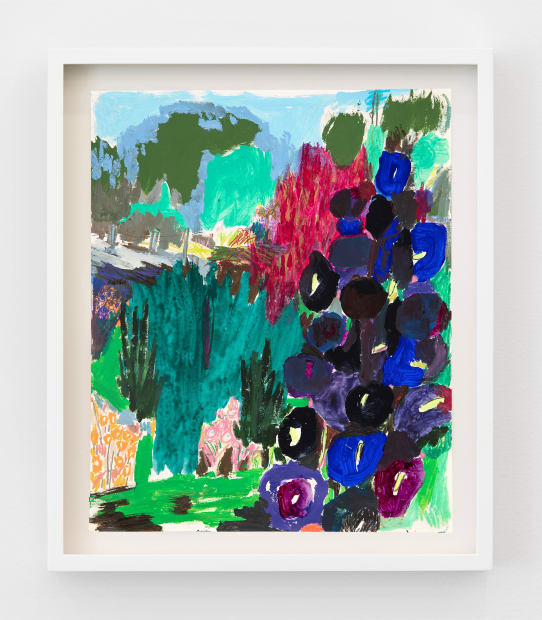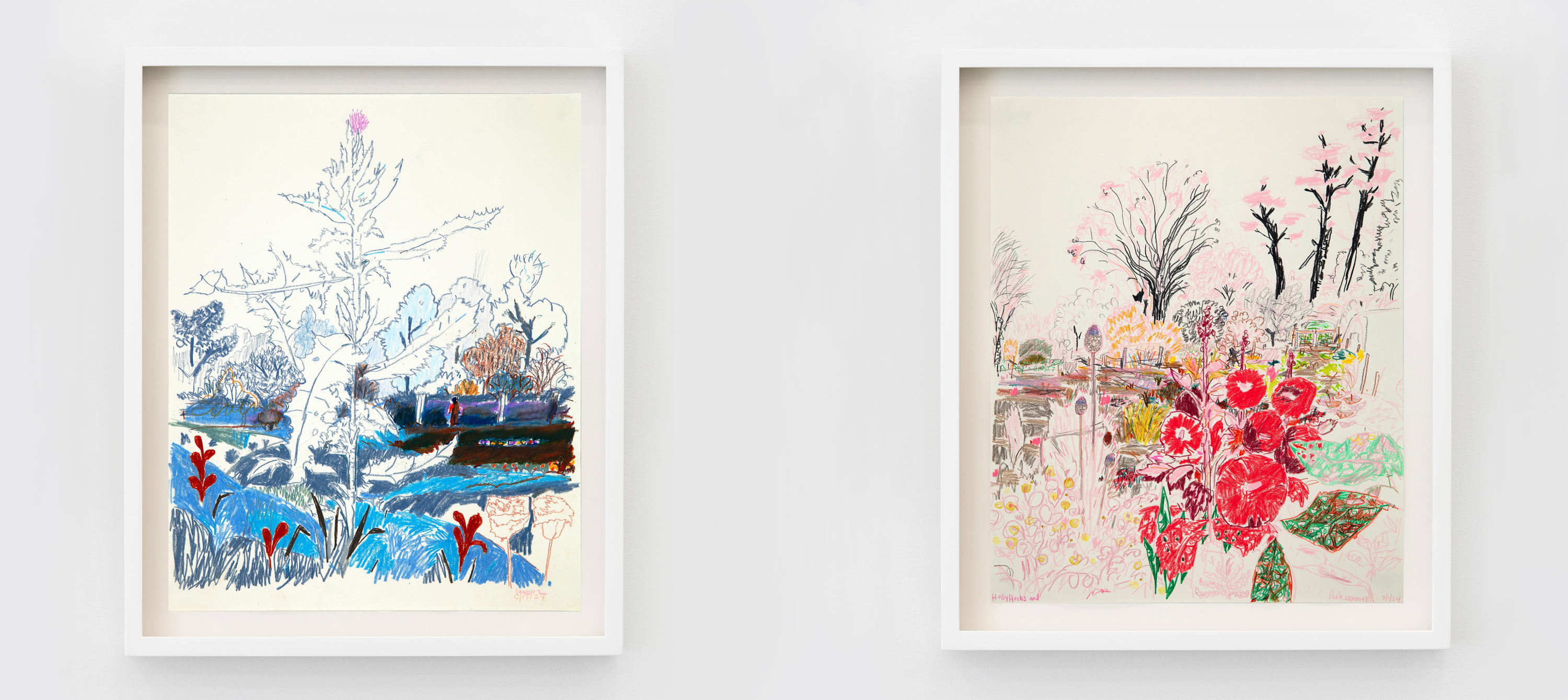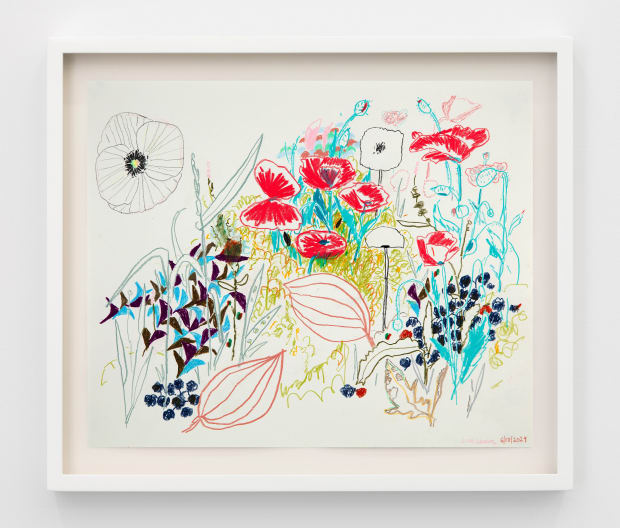-
In Conversation with Lisa Sanditz
May 10, 2024 -
 Lisa Sanditz, Black Hollyhocks and, 2024, Colored pencil and watercolor on paper, unframed, 17 x 14 in; 43.2 x 35.6 cm
Lisa Sanditz, Black Hollyhocks and, 2024, Colored pencil and watercolor on paper, unframed, 17 x 14 in; 43.2 x 35.6 cm -
 Lisa Sanditz, Blue Flowers, 2024, Acrylic, flashe and colored pencil on paper, unframed, 11 x 15 in; 27.9 x 38.1 cm
Lisa Sanditz, Blue Flowers, 2024, Acrylic, flashe and colored pencil on paper, unframed, 11 x 15 in; 27.9 x 38.1 cm -
 Lisa Sanditz, Black Hollyhocks and Too, 2024, Colored pencil, flashe and acrylic on paper, unframed, 17 x 14 in; 43.2 x 35.6 cm
Lisa Sanditz, Black Hollyhocks and Too, 2024, Colored pencil, flashe and acrylic on paper, unframed, 17 x 14 in; 43.2 x 35.6 cm -
 (Left) Lisa Sanditz, Pine Cones and, 2024, Colored pencil and watercolor on paper, unframed, 14 x 17 in; 35.6 x 43.2 cm(Right) Lisa Sanditz, Forest and, 2024, Colored pencil on paper, unframed, 14 x 17 in; 35.6 x 43.2 cm
(Left) Lisa Sanditz, Pine Cones and, 2024, Colored pencil and watercolor on paper, unframed, 14 x 17 in; 35.6 x 43.2 cm(Right) Lisa Sanditz, Forest and, 2024, Colored pencil on paper, unframed, 14 x 17 in; 35.6 x 43.2 cm -

(Left) Lisa Sanditz, Thistle, 2024, Colored pencil on paper, unframed, 14 x 17 in; 35.6 x 43.2 cm
(Right) Lisa Sanditz, Hollyhocks and, 2024, Colored pencil on paper, unframed, 17 x 14 in; 43.2 x 35.6 cm
-
 Lisa Sanditz, Ranunculus and, 2024, Colored pencil and watercolor on paper, unframed, 14 x 17 in; 35.6 x 43.2 cm
Lisa Sanditz, Ranunculus and, 2024, Colored pencil and watercolor on paper, unframed, 14 x 17 in; 35.6 x 43.2 cm -
 Lisa Sanditz, Poppies and, 2024, Colored pencil on paper, unframed, 14 x 17 in; 35.6 x 43.2 cm
Lisa Sanditz, Poppies and, 2024, Colored pencil on paper, unframed, 14 x 17 in; 35.6 x 43.2 cm -

Lisa Sanditz: Ranunculus and...
Past viewing_room







